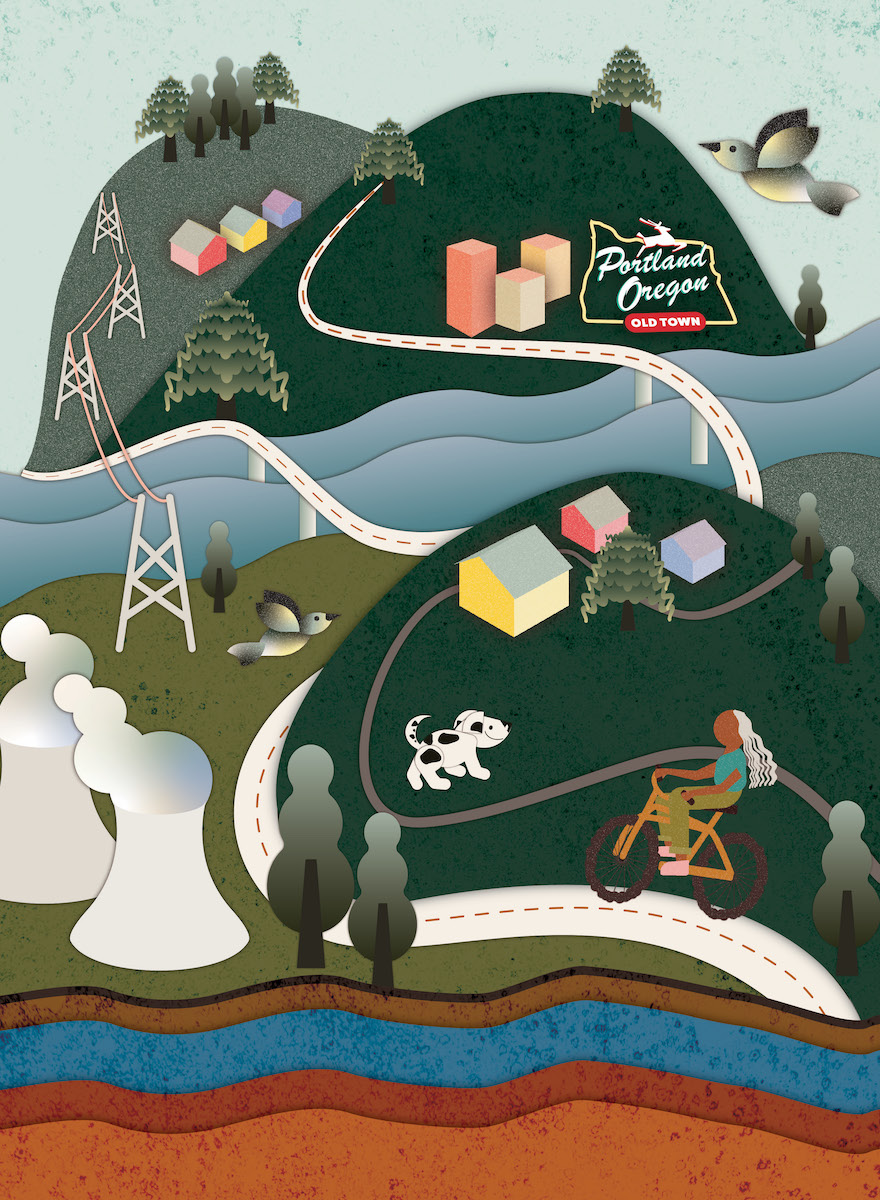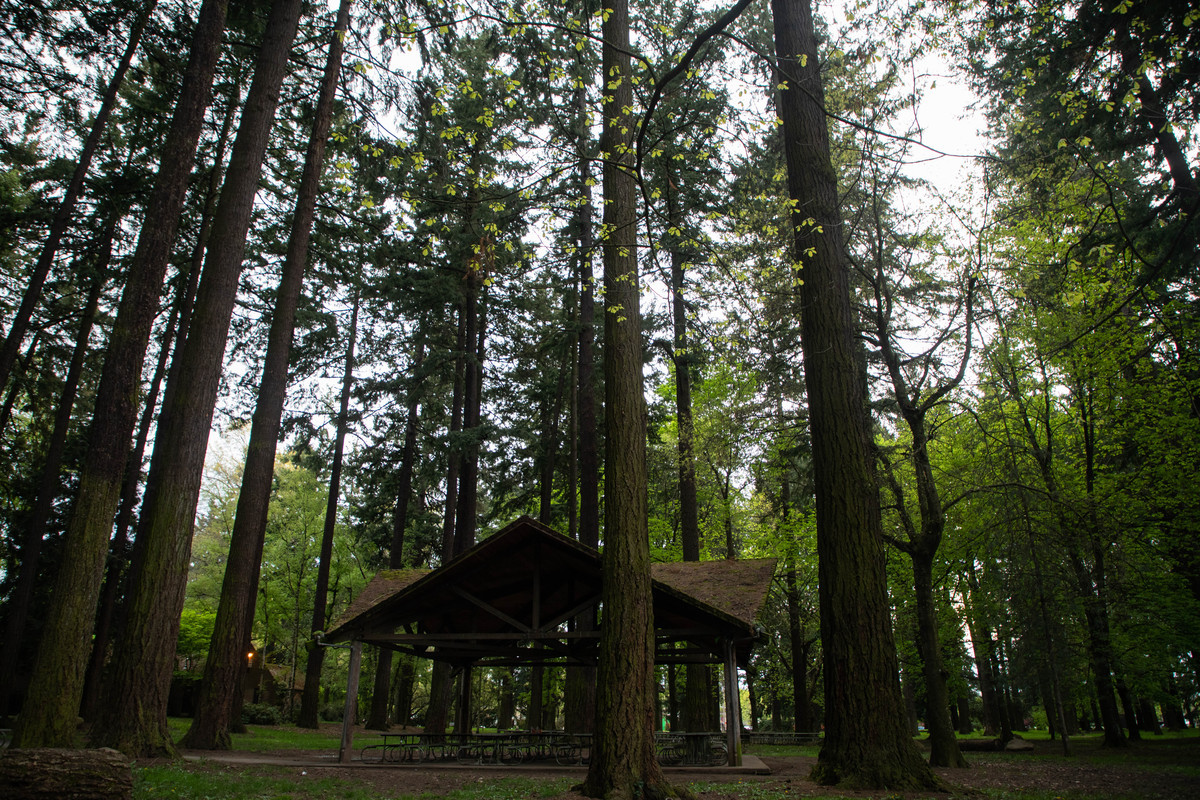When discussing new energy, geothermal might not be the first thing which comes to mind for most people, but it has potential to be a locally-sourced, renewable energy which creates a more sustainable future for Portland and cities all over the U.S.
Many places worldwide utilize natural hotspots to generate electricity through geothermal power. Special technology can harness this energy to generate electricity or heat buildings. It’s clean, sustainable and doesn’t produce harmful greenhouse gasses, making it an eco-friendly alternative to traditional fossil fuels.
While the Portland basin does not have a hot spot, there is stable stagnant water which can be used as storage for heating and cooling buildings internally. This would rely on traditional means of heating and cooling—which create large emissions—significantly less.
The recent study—which researchers from PSU’s geology department participated in—primarily focuses on the various applications of geothermal energy, particularly for large-scale building projects with an emphasis on heating and—more importantly during the summer—cooling.
Where heating is a well-established right provided by landlords, Oregon only recently passed a bill allowing renters to have an air conditioning unit. Summers are getting hotter globally, and we need a change in how we cool down, which doesn’t rely on everyone having access to air conditioning and the electricity bill accompanying it. We need an adaptive infrastructure so that Portland can be more energy resilient.
John Bershaw—head of the Portland State geology department—employed an interdisciplinary approach to the complexity of this evolving issue, focusing on an equitable way of advancing widespread energy capacity which doesn’t necessarily need to travel long distances to get here.
“We want our critical infrastructure to be resilient—to have multiple ways to function,” Bershaw said. “And so having something that’s local like that, where it’s literally getting heat from underground underneath the hospital, doesn’t require infrastructure. It doesn’t require trains. It doesn’t require power lines. It doesn’t require pipelines, etc. That is really attractive.”
Conventional geothermal energy is already in Oregon, mostly in Klamath Falls. We have directly explored the use of geothermal energy using the volcanic temperatures, which created a geothermal gradient for use in places like Newberry, Oregon.
When it comes to Portland, “we don’t have a bunch of magma under our feet,” Bershaw said. “Thermal gradient under Portland is actually really low.”
Jonathan Fink—a PSU geology professor—focuses on making cities more sustainable, participating in various projects across the city. “Just with the idea that under the campus, if you go down a few hundred feet, the temperature stays stable and around 40 or 50°F,” Fink said. “And so you can just circulate water down there, get that temperature and use it for heating and cooling the campus.”
When circulating that water underground, it goes through a very specific process. “The idea here is what if we use that rock in the subsurface, which I’m going to call a reservoir,” Bershaw said. “What if we use that rock as a thermal battery?”
This framework of deep, direct-use would go farther down than any aquifer taking water past our clean water aquifer to pockets of stagnant water in which we would establish reservoir thermal energy storage.
The reservoir would be designed to have excellent thermal insulation to minimize temperature exchange to the surroundings, similar to a battery. This is crucial to preserve the stored thermal energy until it becomes pertinent for use in the winter months.
Leveraging cool temperatures, they can also circulate cool water through buildings for natural cooling, switching between hot water reservoir and cool water reservoir.
However, given the lack of warm temperatures below our feet, the way we use the water to heat our buildings is a slightly different process than the way we have used geothermal energy in the past.
This plan works in conjunction with other power sources—such as solar—which helps capture heat for the reservoir where it’s then stored for potentially chilly winters. This is especially important when other heat sources aren’t as reliable as we need them to be.
Bershaw is one of many experts who works with organizations and city officials to build a model of Portland which explores the possibility of using geothermal energy to improve temperature regulation in the city.
The process does have drawbacks. It is initially quite expensive and time-intensive to facilitate. This technology requires a substantial infrastructure investment, including underground structures, piping for circulating hot or cold water and properly insulating buildings to maximize the benefits of this technology.
Moreover, there were concerns about risks which appear with fracking. When fracking takes place and people inject a lot of water into the subsurface, it can create a micro-earthquake. However, when the researchers analyzed this concern, they found, “The amount of water we’d be moving through is so small compared to what they [use when fracking] that it’s not a risk,” Bershaw said.
With temperatures and the demand for cooling in cities increasing, we are only going to see needs for this technology increase. It provides innovations which can create an adaptive city by creating cooling and warming solutions. This locally provided energy source could provide “low carbon footprint energy in addition to resilient energy,” Bershaw said.




